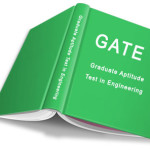Planning to study abroad? Know how you can score good bands in IELTS.

There are a lot of people targeting to go abroad for emigration or study purpose, but for the process to start they first have to undergo and successfully clear the IELTS exam. To score good in the test we need to know all the basic details about the test so that we could score the desired bands in the first attempt. There are people who take IELTS exam and fall short of bands just because of less knowledge and practice. This article will cast light on the basic details that you need to know before take the test so that you achieve the desired bands and don’t waste your time, money and efforts.
IELTS stands for International English Language Testing System. It is an English language proficiency exam which measures the ability of test-takers to communicate in the four basic language skills: listening, reading, writing, and speaking. IELTS is jointly managed by University of Cambridge ESOL Examinations, British Council, and IDP: IELTS Australia.
Test Reports have a validity of two years. You can retake the test if you don’t achieve the desired score but it is better to apply for a rescoring is you feel that your test was good but you did not score accordingly. There is a fee for the same which is to be paid and if there is some increase in your score then that fee is refunded back to you.No minimum score is required to pass the test. An IELTS result or Test Report Form is issued to all test takers with a score from “band 1” (“non-user”) to “band 9” (“expert user”) and each institution sets a different threshold. There is also a “band 0” score for those who did not attempt the test.
There are two modules of the IELTS:
- Academic Module and
- General Training Module
IELTS Academic is intended for those who want to enroll in universities and other institutions of higher education and for professionals such as medical doctors and nurses who want to study or practice in an English-speaking country.
IELTS General Training is intended for those planning to undertake non-academic training or to gain work experience, or for immigration purposes.
- IELTS Academic and General Training both incorporate the following features:
- IELTS tests the ability to listen, read, write and speak in English.
The speaking module is a key component of IELTS. It is conducted in the form of a one-to-one interview with an examiner. The examiner assesses the test taker as he or she is speaking. The speaking session is also recorded for monitoring and for re-marking in case of an appeal against the score given.
- A variety of accents and writing styles have been presented in test materials in order to minimise linguistic bias.
- IELTS is developed by experts at Cambridge English Language Assessment with input from item writers from around the world. Teams are located in the USA, Great Britain, Australia, New Zealand, Canada and other English-speaking nations.
- Band scores are used for each language sub-skill (Listening, Reading, Writing, and Speaking). The Band Scale ranges from 0 (“Did not attempt the test”) to 9 (“Expert User”).
The difference between the Academic and General Training versions is the content, context and purpose of the tasks. All other features, such as timing allocation, length of written responses and reporting of scores, are the same.
The IELTS test has four parts
- Listening: 30 minutes (plus 10 minutes’ transfer time)
- Reading: 60 minutes
- Writing: 60 minutes
- Speaking: 11–14 minutes
The test total time is: 2 hours and 45 minutes.
Listening, Reading and Writing are completed in one sitting. The Speaking test may be taken on the same day or up to seven days before or after the other tests. All test takers take the same Listening and speaking tests, while the Reading and Writing tests differ depending on whether the test taker is taking the Academic or General Training versions of the test.
Listening – The module comprises four sections, with ten questions in each section. It takes 40 minutes: 30 – for testing, plus 10 for transferring the answers to an answer sheet.
- Sections 1 and 2 are about every day, social situations.
- Section 1 has a conversation between two speakers (for example, a conversation about travel arrangements)
- Section 2 has one person speaking (for example, a speech about local facilities).
- Sections 3 and 4 are about educational and training situations
- Section 3 is a conversation between two main speakers (for example, a discussion between two university students, perhaps guided by a tutor)
- Section 4 has one person speaking about an academic subject.
Test takers will lose marks for incorrect spelling and grammar.
Reading – The Reading paper has three sections and texts totaling 2,150-2,750 words. There will be a variety of question types, such as multiple choice, short-answer questions, identifying information, identifying writer’s views, labeling diagrams, completing a summary using words taken from the text and matching information/headings/features in the text/sentence endings. Test takers should be careful when writing down their answers as they will lose marks for incorrect spelling and grammar.
Texts in IELTS Academic – Three reading texts, which come from books, journals, magazines, newspapers and online resources written for non-specialist audiences. All the topics are of general interest to students at undergraduate or postgraduate level.
Texts in IELTS General Training –
- Section 1 contains two or three short texts or several shorter texts, which deal with everyday topics. For example, timetables or notices – things a person would need to understand when living in an English-speaking country.
- Section 2 contains two texts, which deal with work. For example, job descriptions, contracts, training materials.
- Section 3 contains one long text about a topic of general interest. The text is generally descriptive, longer and more complex than the texts in Sections 1 and 2. The text will be taken from a newspaper, magazine, book or online resource.
Writing – The Writing paper has two tasks which must both be completed. In task 1 test takers write at least 150 words in about 20 minutes. In task 2 test takers write at least 250 words in about 40 minutes. Test takers will be penalised if their answer is too short or does not relate to the topic. Answers should be written in full sentences (test takers must not use notes or bullet points).
IELTS Academic
- Task 1: test takers describe a graph, table, chart or diagram in their own words.
- Task 2: test takers discuss a point of view, argument or problem. Depending on the task, test takers may be required to present a solution to a problem, present and justify an opinion, compare and contrast evidence, opinions and implications, and evaluate and challenge ideas, evidence or an argument.
IELTS General Training
- Task 1: test takers write a letter in response to a given everyday situation. For example, writing to an accommodation officer about problems with your accommodation, writing to a new employer about problems managing your time, writing to a local newspaper about a plan to develop a local airport.
- Task 2: test takers write an essay about a topic of general interests. For example, whether smoking should be banned in public places, whether children’s leisure activities should be educational, how environmental problems can be solved.
Speaking – The speaking test is a face-to-face interview between the test taker and an examiner. The speaking test contains three sections.
- Section 1: introduction and interview (4–5 minutes). Test takers may be asked about their home, family, work, studies, hobbies, interests, reasons for taking IELTS exam as well as other general topics such as clothing, free time, computers and the internet.
- Section 2: long turn (3–4 minutes). Test takers are given a task card about a particular topic. Test takers have one minute to prepare to talk about this topic. The task card states the points that should be included in the talk and one aspect of the topic which must be explained during the talk. Test takers are then expected to talk about the topic for 2 minutes, after which the examiner may ask one or two questions.
- Section 3: discussions (4–5 minutes). The third section involves a discussion between the examiner and the test taker, generally on questions relating to the theme which they have already spoken about in Section 2.
Scoring – Test takers receive a score for each test component – Listening, Reading, Writing and Speaking. The individual scores are then averaged and rounded to produce an Overall Band Score.
Band scale – There is no pass or fail. IELTS is scored on a nine-band scale, with each band corresponding to a specified competence in English. Overall Band Scores are reported to the nearest half band.
Results
A Test Report Form is posted to test takers 13 days after their test. It shows:
- An Overall Band Score (from 1-9)
- A band score (from 1-9) for each section of the test (Listening, Reading, Writing and Speaking)
- Whether IELTS Academic or General Training was completed
- The test taker’s photo, nationality, first language and date of birth.
Test Report Forms are valid for two years.
Hammering the last nail, I would like to suggest that practice is the key to success here. Just keep practicing until you feel you are ready, and devote a minimum of 3-4 hours daily to IELTS practice and you will be ready in a month or so. Good luck!

 Currency Convertor
Currency Convertor Post an article
Post an article Covid19 Updates
Covid19 Updates Daman Kang
Daman Kang
 sending...
sending...




